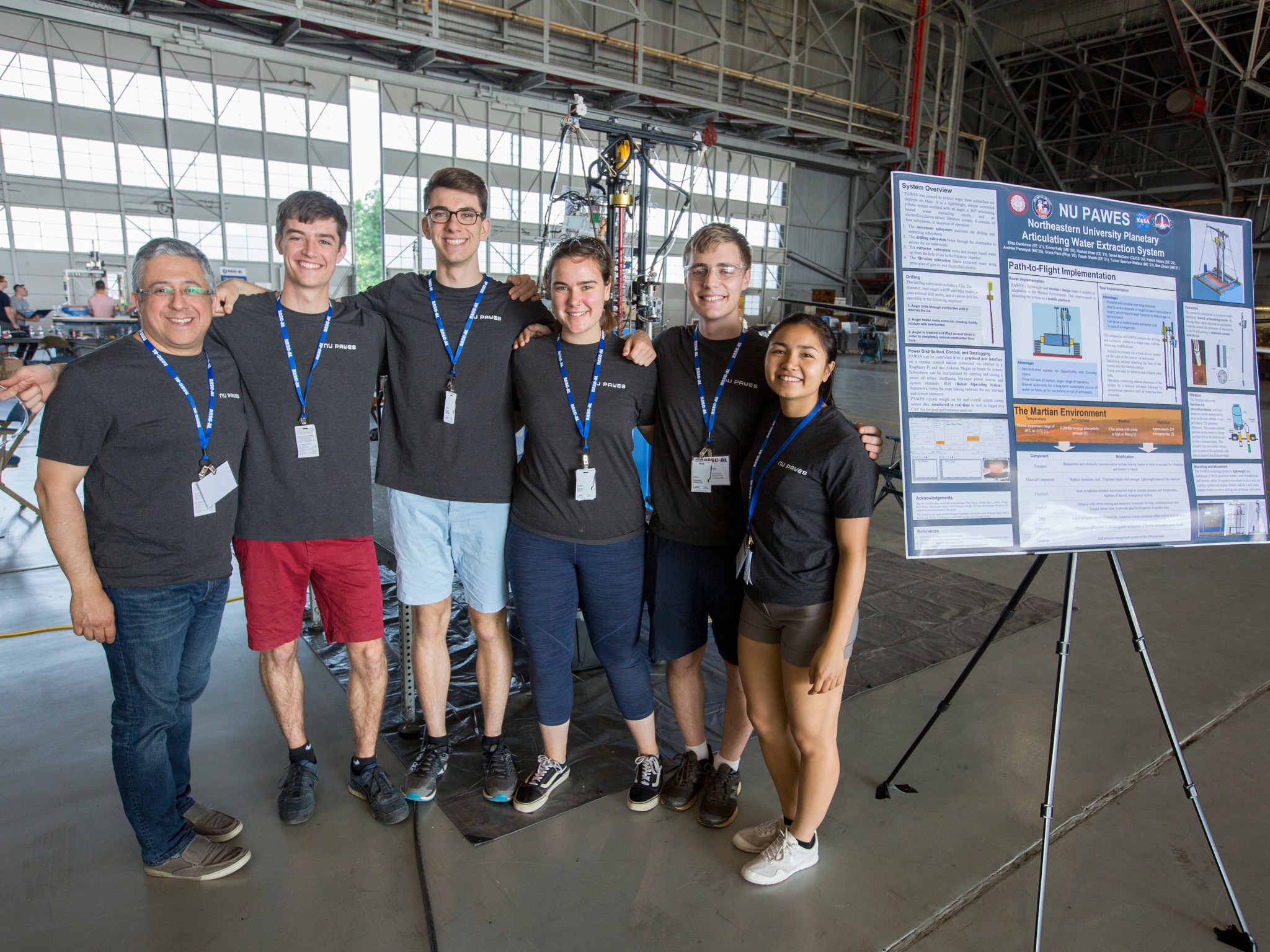In deep space, accessing water is a top priority for human survival. NASA is exploring ways to provide water using existing resources on multiple planetary surfaces and engaging universities in this mission through the RASC-AL (Revolutionary Aerospace Systems Concepts – Academic Linkages) Special Edition: Mars Ice Challenge.
The Mars Ice Challenge is one of several RASC-AL collegiate design competitions sponsored by NASA and administered by the National Institute of Aerospace in Hampton, Virginia, that exercise innovation in support of NASA’s vision for expanding human space exploration – in this case, a technology demonstration for critical in-situ resource utilization (ISRU) capabilities.
In its second year, Mars Ice Challenge judges 10 competitively selected teams to travel to NASA’s Langley Research Center from June 5-7 to demonstrate unique methods for harvesting water from simulated Martian subsurface ice. The goal? Extract as much water as possible over a two-day period.
“The students are using a combination of autonomous operation and remote control to operate their water extraction systems just like we would in space,” said Melvin Ferebee, program sponsor and director of the Systems Analysis and Concepts Directorate at Langley in Hampton. “They are taking on the role of astronauts on Mars, controlling drilling operations and having to strategize and adapt to challenges.”
The selected teams include two from West Virginia University and one each from Alfred University, Colorado School of Mines, Carnegie Mellon University, University of Tennessee, Knoxville, Massachusetts Institute of Technology, Northeastern University, Rowan University and Virginia Tech.
Teams mounted their prototype drills at individual test stations using 4-foot tall commercial fishing coolers filled with 600-pound ice blocks and a half-meter of pitcher’s mound clay and gravel to replicate a slice of the Martian surface as closely as possible.
Mimicking other Martian conditions on Earth, however, is nearly impossible. Differences in temperature, atmospheric pressure, power limitations and gravity all affect the way machinery and water operate on different planets.
“We know there is an abundance of frozen water on Mars,” said Richard Davis, assistant director of science and exploration for NASA’s Science Mission Directorate Planetary Science Division. “Before the water can be used to support sustained human presence, it must be extracted from the Mars ice deposits and isolated to prevent evaporation from the low atmospheric pressures found on Mars.”
Participating in the Mars Ice Challenge is no easy undertaking. Teams poured their blood, sweat, and tears into tackling this hard-to-solve problem, designing and building complicated prototypes to be tested and submitting robust technical papers outlining how they would adapt their concept to operate effectively on Mars.
This year, the team from Northeastern University placed first overall and collected the most water with its concept titled Planetary Articulating Water Extraction System.
“The team is very excited, they all worked very hard,” said Dr. Taskin Padir, the team’s advisor. “One of the great things about this competition is that we were able to build on what we learned from the past year’s teams.”
Northeastern mechanical engineering student Emmy Kelly added the team is already thinking about what’s next.
“We were glad we performed so well but as soon as we got back to the hotel we started talking about next year,” she said. “We want to improve and make modifications so we can run more autonomously. We’re looking to be more Mars ready.”
The Northeastern University team isn’t the only the winner in this competition. NASA and industry experts also recorded lessons learned from the challenge that will help inform and improve the collective success of future work in this area.
“The idea behind this challenge is exciting,” Langley Deputy Director Clayton Turner said. “For a very small investment, we are reaping big rewards, getting to preview 10 completely unique methods for harvesting water on Mars so we can see what works and what doesn’t so we can narrow our focus and move forward with a few proven technologies.”
Other awards:
Second Place Winner and Clearest Water: West Virginia University – Second Generation Mountaineer Ice Drilling Automated System
Best Technical Paper: Massachusetts Institute of Technology – High Yield Dihydrogen-monoxide Retrieval Assembly and Virginia Tech – Virginia Tech Ice Extractor
View a photo gallery of the competition.
In case you missed the live coverage, see it here: https://youtu.be/nucVsiGIQLg
To learn more about RASC-AL Special Edition: Mars Ice Challenge visit:




























